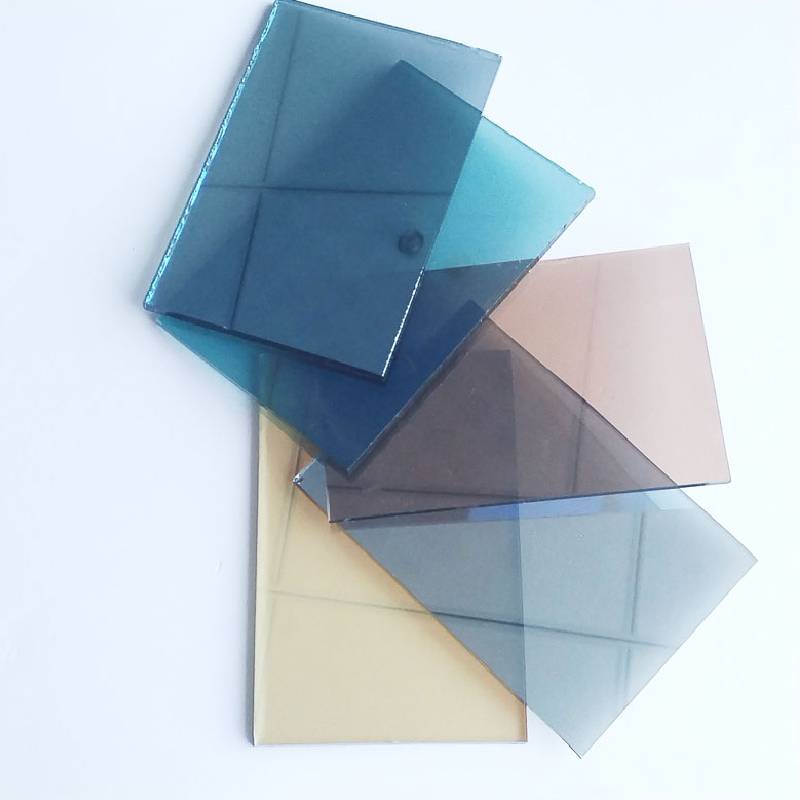The Art and Science of Tempered Glass Making
In the modern architecture and design landscape, tempered glass stands out as a critical material. Known for its strength, durability, and safety features, tempered glass is utilized in a wide range of applications, from skyscrapers and storefronts to shower doors and glass doors. The process of making tempered glass is a fascinating blend of art and science, showcasing the innovative techniques of glassmakers who have perfected their craft over the years.
Tempering glass refers to a process that enhances the physical and thermal properties of ordinary glass. This involves heating the glass to a temperature of approximately 600°C (about 1,112°F) and then rapidly cooling it down. This thermal treatment removes internal stresses that occur in the glass during the manufacturing process, resulting in a product that is much stronger and more resistant to thermal shock.
The journey begins with the selection of raw materials. High-quality silica sand, soda ash, and limestone form the base of the glass. These materials are meticulously mixed and melted in a furnace at extremely high temperatures, typically around 1,700°C (about 3,092°F). The molten glass is then carefully shaped into sheets, which will later be tempered.
Once the glass is formed, it goes through the tempering process. The glass sheets are first slowly heated in a controlled environment until they reach the desired temperature. Maintaining consistent heating is crucial, as any variance can lead to weak spots or fractures. After reaching the target temperature, the glass is rapidly cooled by blowing cold air across its surface. This quenching process is what gives tempered glass its strength, making it at least five times stronger than standard glass of the same thickness.
An essential aspect of tempered glass production is the attention to safety. Unlike regular glass, which tends to shatter into sharp shards that can cause injury, tempered glass breaks into small, blunt pieces that are far less likely to cause harm. This characteristic makes it ideal for areas where safety is a concern, such as in buildings, vehicles, and more.
tempered glass maker
Moreover, tempered glass is often coated or laminated to further enhance its properties. For example, a reflective coating can be added to improve energy efficiency in buildings, while a lamination process can enhance safety and sound insulation. Each additional treatment can cater to specific needs and applications, making tempered glass an incredibly versatile material.
Given its importance, tempered glass makers face various challenges. The demand for customized shapes and sizes requires precision and expertise in glass cutting. Innovations in technology have allowed for automated processes in cutting and shaping, yet the artistry of traditional glassmaking remains invaluable. Skilled craftsmen still play a vital role, particularly in intricate designs and unique applications.
Environmental considerations are also becoming increasingly relevant in the glass industry. Many glassmakers are adopting greener practices, such as using recycled glass in their products and implementing energy-efficient processes in their manufacturing plants. This not only reduces the carbon footprint but also meets the growing consumer demand for sustainable building materials.
The market for tempered glass continues to grow, driven by the construction boom and increasing consumer interest in home renovation. Architects and designers appreciate the aesthetic appeal of glass, which can enhance natural light and create an open atmosphere. Additionally, advances in technology and materials science promise to push the boundaries of what is possible with tempered glass, exploring new applications and functionalities.
In conclusion, tempered glass makers operate at the intersection of technology and artistry, creating a material that is not only functional but also visually appealing. Their expertise reflects a deep understanding of materials science, a commitment to safety, and an appreciation for design. As the industry evolves, it will be exciting to see how tempered glass continues to shape our built environment while addressing the challenges of sustainability and innovation.
 Afrikaans
Afrikaans  Albanian
Albanian  Amharic
Amharic  Arabic
Arabic  Armenian
Armenian  Azerbaijani
Azerbaijani  Basque
Basque  Belarusian
Belarusian  Bengali
Bengali  Bosnian
Bosnian  Bulgarian
Bulgarian  Catalan
Catalan  Cebuano
Cebuano  Corsican
Corsican  Croatian
Croatian  Czech
Czech  Danish
Danish  Dutch
Dutch  English
English  Esperanto
Esperanto  Estonian
Estonian  Finnish
Finnish  French
French  Frisian
Frisian  Galician
Galician  Georgian
Georgian  German
German  Greek
Greek  Gujarati
Gujarati  Haitian Creole
Haitian Creole  hausa
hausa  hawaiian
hawaiian  Hebrew
Hebrew  Hindi
Hindi  Miao
Miao  Hungarian
Hungarian  Icelandic
Icelandic  igbo
igbo  Indonesian
Indonesian  irish
irish  Italian
Italian  Japanese
Japanese  Javanese
Javanese  Kannada
Kannada  kazakh
kazakh  Khmer
Khmer  Rwandese
Rwandese  Korean
Korean  Kurdish
Kurdish  Kyrgyz
Kyrgyz  Lao
Lao  Latin
Latin  Latvian
Latvian  Lithuanian
Lithuanian  Luxembourgish
Luxembourgish  Macedonian
Macedonian  Malgashi
Malgashi  Malay
Malay  Malayalam
Malayalam  Maltese
Maltese  Maori
Maori  Marathi
Marathi  Mongolian
Mongolian  Myanmar
Myanmar  Nepali
Nepali  Norwegian
Norwegian  Norwegian
Norwegian  Occitan
Occitan  Pashto
Pashto  Persian
Persian  Polish
Polish  Portuguese
Portuguese  Punjabi
Punjabi  Romanian
Romanian  Russian
Russian  Samoan
Samoan  Scottish Gaelic
Scottish Gaelic  Serbian
Serbian  Sesotho
Sesotho  Shona
Shona  Sindhi
Sindhi  Sinhala
Sinhala  Slovak
Slovak  Slovenian
Slovenian  Somali
Somali  Spanish
Spanish  Sundanese
Sundanese  Swahili
Swahili  Swedish
Swedish  Tagalog
Tagalog  Tajik
Tajik  Tamil
Tamil  Tatar
Tatar  Telugu
Telugu  Thai
Thai  Turkish
Turkish  Turkmen
Turkmen  Ukrainian
Ukrainian  Urdu
Urdu  Uighur
Uighur  Uzbek
Uzbek  Vietnamese
Vietnamese  Welsh
Welsh  Bantu
Bantu  Yiddish
Yiddish  Yoruba
Yoruba  Zulu
Zulu 

